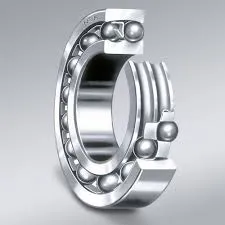
Dec . 03, 2024 13:17 Back to list
6211 bearing price
Understanding the Pricing of 6211 Bearings
Bearings are essential components used in a wide range of machinery and applications, from automotive engines to household appliances. Among the various types of bearings, the 6211 bearing stands out due to its versatile nature and wide applicability in various industries. This article delves into the pricing factors surrounding 6211 bearings, offering insights into why these components are priced the way they are.
What is a 6211 Bearing?
The 6211 bearing is a type of deep groove ball bearing that is widely used for its simple design and effective performance. It features a single row of balls, allowing it to accommodate both radial and axial loads. The dimensions of a 6211 bearing are typically 55 mm inner diameter, 100 mm outer diameter, and 21 mm width. This specific size and configuration make it suitable for a variety of applications, including electric motors, gearboxes, conveyors, and fans.
Factors Affecting the Price of 6211 Bearings
1. Material Quality The material used to manufacture bearings significantly influences their price. High-quality steel, such as chrome steel (AISI 52100), is commonly used in making 6211 bearings due to its excellent hardness and fatigue resistance. Bearing manufacturers that utilize premium materials often charge a higher price, ensuring durability and reliability in demanding applications.
2. Manufacturing Processes The production methods employed also play a crucial role in determining bearing prices. Advanced manufacturing techniques, such as precision machining and heat treatment, enhance the performance characteristics of the bearings. Bearings produced through these methods tend to have a higher price tag than those manufactured through less rigorous processes.
6211 bearing price

3. Brand Reputation Established bearing brands that have built a reputation for quality and reliability typically charge more for their products. While purchasing from a well-known brand may be more expensive, it often comes with the assurance of better performance and longer lifespan, which can lead to cost savings in the long run.
4. Market Demand and Availability Like any other product, the supply and demand dynamics in the market also affect the pricing of 6211 bearings. If there is a surge in demand due to increased manufacturing activity or a shortage of supply, prices may rise. Conversely, if the market is saturated with competitors, prices may be driven down as sellers attempt to attract customers.
5. Bulk Purchase Discounts For businesses requiring a large volume of bearings, suppliers often offer discounts for bulk purchases. This means that the price per bearing decreases significantly when bought in larger quantities. Hence, companies frequently evaluate their needs and explore options for bulk purchasing to optimize their procurement costs.
Conclusion
The price of 6211 bearings can vary based on several factors, including material quality, manufacturing processes, brand reputation, market demand, and purchasing volume. For individuals or businesses looking to purchase 6211 bearings, it is essential to consider these factors carefully. Investing in high-quality bearings may come with a higher initial cost but can lead to reduced maintenance and replacement expenses over time.
When sourcing 6211 bearings, it is advisable to compare prices from multiple suppliers, assess the quality of the products they offer, and consider the after-sales support and warranty provisions. Understanding these aspects can help purchasers make informed decisions that align with their operational needs and budget constraints.
In summary, while the price of 6211 bearings may vary greatly, finding the right balance between cost and quality will ensure optimal performance and longevity in any application. Whether for a small project or large-scale operations, being knowledgeable about bearing pricing dynamics will ultimately lead to better purchasing decisions.
Latest news
-
Grooved Ball Bearing Design and Functionality
NewsJun.04,2025
-
Concrete Mixer Bearing Load Capacity Testing
NewsJun.04,2025
-
6004 Bearing Dimensions in Robotic Joint Designs
NewsJun.04,2025
-
Advantages of Single-Row Deep Groove Ball Bearings
NewsJun.04,2025
-
Applications of Deep Groove Ball Bearings in Automotive Systems
NewsJun.04,2025
-
Innovations in Bearing Pressing Machine Design
NewsJun.04,2025
